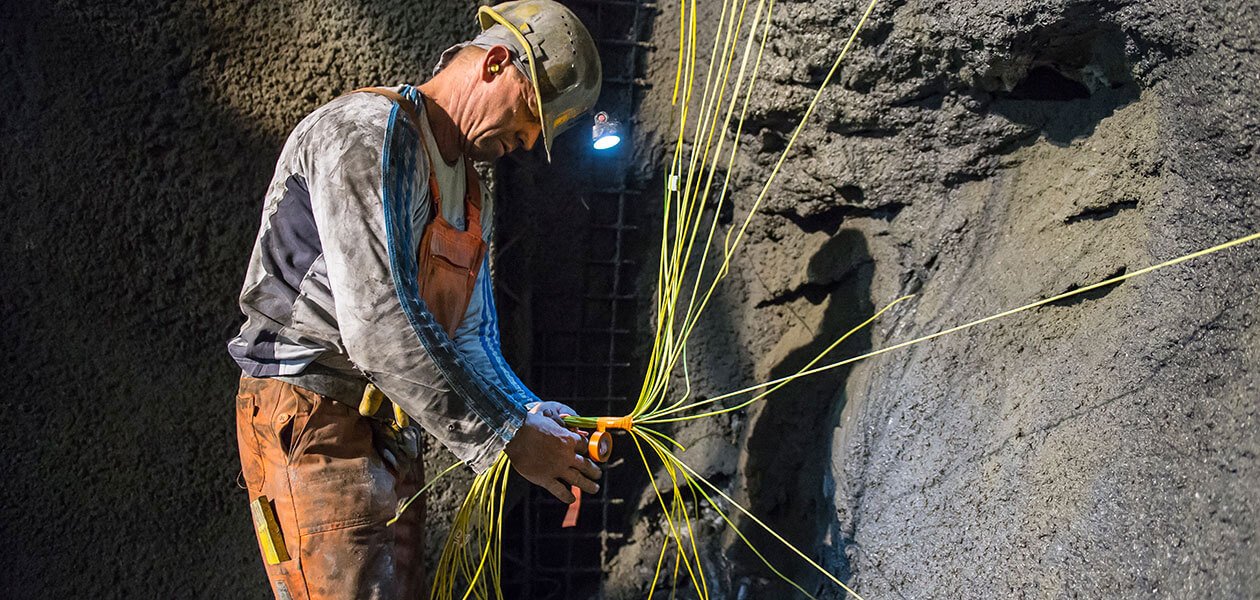
Tunnelling methods
In tunnel construction, we differentiate between two excavation methods: blasting and mechanised tunnelling using tunnel boring machines (TBMs). The choice of excavation method depends on various factors – e.g. route length, nature of the rock mass, economic framework conditions and planned construction period.
High-tech giants in hard rock
Full face TBMs are mobile, electronically operated mills in the mountain: they pierce the rock with a rotating drilling head, remove the spoil, and, depending on the type of construction, secure the excavated tunnel with shotcrete, rock bolts and wire mesh or prefabricated segments of reinforced concrete.
TBMs achieve an excavation which is exactly according to profile, and provide the workers with enhanced protection. The daily excavation output of TBMs can be up to 40m.
BBT SE is carrying out approximately 50% of its work on the Brenner Base Tunnel using machines. From 2019, four TBMs will thus be in use at the same time.
Drill-and-blast excavation
Conventional excavation using shotcrete is a very flexible method of excavation. This is suitable for difficult, varying ground conditions and is very good for different sizes and for complex cross-sectional geometries.
The stages for drilling and blasting are predetermined. The blast holes are drilled first, then loaded with explosives and finally, the explosion takes place. Once the breakout material has been removed, a process known as mucking, tunnel support is applied in the form of shotcrete, anchors, lattice arches and reinforcement mats. After one blasting cycle is complete, the process starts all over again. During the construction of the Brenner Base Tunnel blasting will take place every three to six hours depending on the geological composition of the rock.
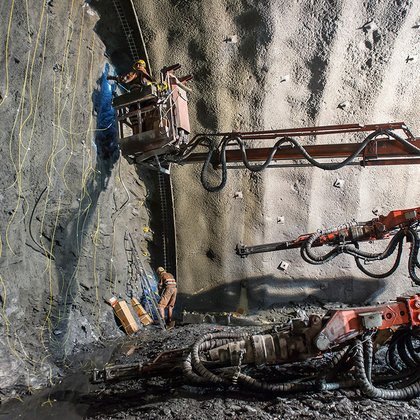
1. Drilling
Before the blasting takes place, the drilling rig bores the drill holes – determined in advance in a blasting plan – in the foremost front wall of the tunnel (working face). The more solid the rock, the more explosives are required.
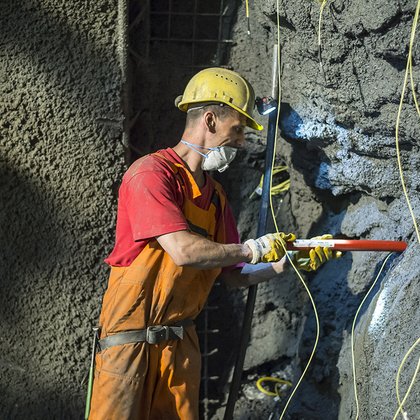
2. Loading and blasting
The drill holes are now filled with explosives, detonators are attached to the explosive devices and the individual explosive devices are connected to one another. The devices should not explode at the same time, but rather one after the other at specified intervals. Only when the blast master has ensured that nobody is left in the danger zone can the explosion be triggered by the blasting machine.
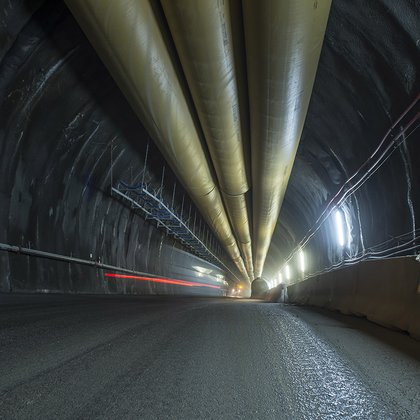
3. Ventilating
The blast causes lots of rock to be flung through the tunnel, dispersing clouds of dust that then mix with the combustion gases of the explosion. So that the miners can resume work in the tunnel, the bad air must be removed from the tunnel. This is done by using so-called air-ducting systems, long steel or plastic pipes, which are attached to the roof of the tunnel and blow fresh air onto the working face. This gives rise to localized excess pressure and the bad air is pushed towards the tunnel exit.
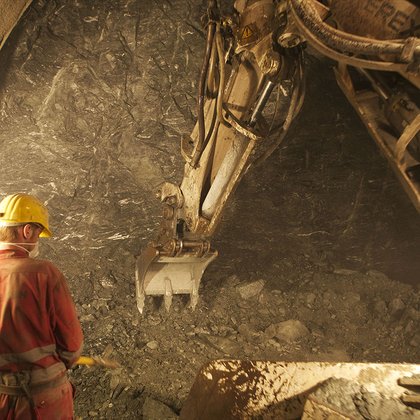
4. Dislodging
Dislodging refers to the stripping away and removal of loose pieces of rock, which were not completely released from the rock during the blasting procedure. This working step is completed by a robust tunnel excavator.
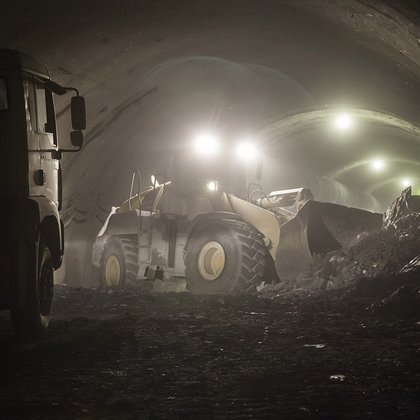
5. Removing rubble
After the loose pieces of rock have been dislodged from the working face, the blasted material – the rubble or spoil - is carried out of the tunnel. The material is either loaded onto dump trucks with wheel loaders and taken from the tunnel to an outside landfill or it is transported from the site of excavation to the landfill on conveyer belts. During the construction of the Brenner Base Tunnel, the transportation of the excavated material mainly takes place automatically using conveyor belts.
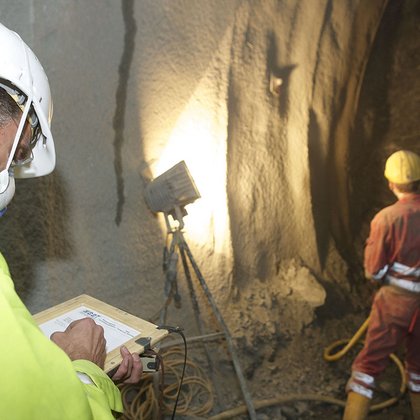
6. Geological mapping
The working face is now freely accessible and the geologist has a few minutes to map it. In the process, he determines what type of rock is present and how the rocks lie, i.e. whether they dip in a flat or steep manner, whether they are folded or even broken. He uses a special compass as an aid to measure the angle of incidence and direction of incidence of the rock structures. At the same time, the strength of the rock, the reaction of the rock mass to the excavation process and any mountain water infiltration are also documented. The mapping report created from this – with sketches and photos - serves as the basis for the selection of appropriate supporting measures.
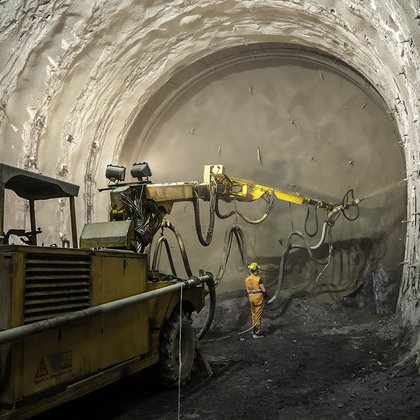
7. Securing
The quickly drying shotcrete used for this purpose in particular enables a cavity-free connection of the securing mechanism to the rock. Depending on the type of rock, a variety of securing measures can be implemented: wire mesh, tunnel arches, stakes or so-called bolts, which can be driven into the rock.
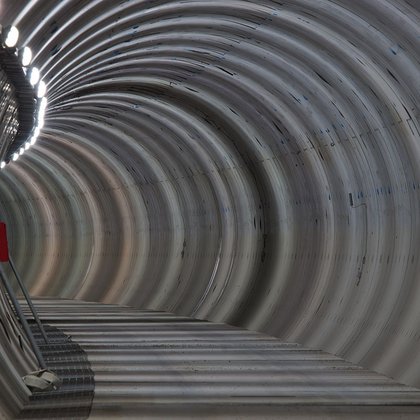
8. Inner shell
Since securing with shotcrete, bolts, etc. only provides a temporary securing solution, a permanent inner shell is subsequently installed, generally upon completion of the excavation procedure. A sealing foil is first attached to the shotcrete where water is suspected. The final concrete coating (inner shell) is only installed after deformations have completely subsided.
